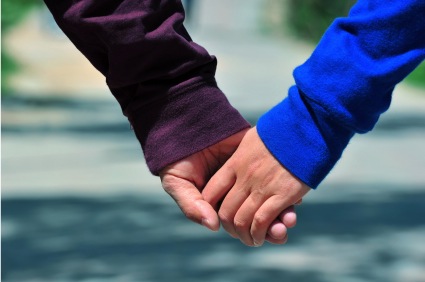The definitive lines between the sexuality of an individual may become more blurred by the minute as a new research study has indicated that hetero- or homosexual preferences of individuals do not exist.
Following popular logic, sexuality is thought of as straight or gay. Bisexuality has only recently begun to be taken seriously. The idea of separate, static, and neatly defined sexual orientations is woven into the fabric of American society and is part of our cultural conception of gender itself; real men are masculine and attracted to women.
A study recently published in the Journal of Personality and Social Psychology undermines long-held beliefs about heteronormative and ideological sexual orientations.
The research looks at gender expression in women and measures their physiological response viewing a variety of pornographic material, broadly.vice.com reports.
The Director of Developmental Psychology, Ritch C. Savin-Williams who administered the research at Cornell University opines that the study is part of a much larger research project he and his fellow researchers are doing to uncover true human sexuality through physiological queues.
He explains the research; “It’s basically a study that assesses sexual orientation by looking at the eyes and whether they dilate or not. You can’t control your eye dilation. Essentially, that’s what the whole project attempts to get at, another way of assessing sexuality without relying on self-report. Another way, of course, is genital arousal, but that gets a little invasive.”
The results of Savin-Williams’ study challenges deeply held cultural beliefs about sexuality, but he’s not surprised to find that sexuality is more complex than gay and straight. “I’m certainly not surprised,” he says. “We’re trying to get at the way people really are. Sometimes, it seems people are one way but believe they have to report themselves in another way, and that’s not good.”
Savin-Williams explains that the motivation for individuals to inaccurately self-report their desire is a consequence of restrictive social influence: the norms that determine how individuals are perceived and treated. He’s been working on an idea that he calls the
He’s been working on an idea that he calls the mostly straight male. “We’ve always recognised mostly straight women, that is, women who mostly are straight but if the right woman comes along, well maybe she’ll try it out. We used to think that was only a female phenomenon.”
“We show straight men a picture of a woman masturbating and they respond just like a straight guy, but then you also show them a guy masturbating and their eyes dilate a little bit. So we’re actually able to show physiologically that all guys are not either gay, straight, or bi.” The various parts of Savin-Williams’ study collectively address sexuality in both men and women, showing that boring ideas, such as that people are either 100 percent straight or gay, don’t endure under objective, scientific scrutiny.
“There are aspects of male sexuality along a certain continuum, just as we have always recognised with women. Men have gotten so much cultural crap put on them that even if a man does have some sexual attraction to guys, they would never say it.”
From the 19th century, political activists have sought to undo structural inequality in the United States. Even cultural norms that are seemingly innocuous can play a significant role in maintaining gender inequity. Through this large study on human sexuality, Savin-Williams and his fellow researchers aim to alter the idea of those norms as scientifically factual.
“I do see this loosening of the boundaries,” he says. “I think that’s happening for both sexes. It’s probably a good thing because it gives kids growing up more diversity, more options, so they don’t feel like they have to fit in at all costs. Straight women and straight men feel much more comfortable than ever before in going into the realm of the other sex in terms of gender role and how they act.”
He also adds that gender repression plays a dual role in the suppression of sexual freedom of exploration as well as the rights of LGBT gender or sexual identity on the populace.
“If you look at women, the self-esteem of lesbian women tends to be higher than that of straight women,” Savin-Williams explains. “Maybe they feel like they have more freedom [to be who they really are]. Granted, society may not always like it, but it is your own authentic self.”


